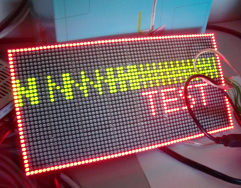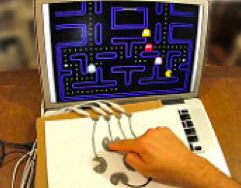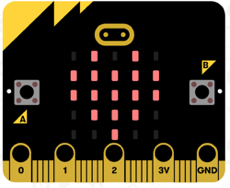Intro to Google Cardboard
What is it ?
Google Cardboard is a virtual reality (VR) platform developed by Google that consists of a the Cardboard SDK, a platform for developers to create virtual reality experiences and a cardboard, printable mount you can use with a mobile phone to view VR applications (an affordable VR headset you can print and fold yourself or buy from 3rd party suppliers).
It’s an affordable way to play with virtual reality content but it does depend on your smart phone, it’s not standalone.
The latest Cardboard was released in early 2015 and is designed to work with smart phones with screens up to 6 inches. And it has a button (the first version didn’t).
Once you have a viewer, you can download compatible apps from the app store. Scan the QR card on the viewer and then put your phone inside the Cardboard viewer to view the virtual reality content.
There’s an official Google Cardboard app with examples to get you started.

Recipes
Print and build your own Google Cardboard mount
Watch (your library’s) YouTube content on Google Cardboard http://www.technobuffalo.com/2015/11/05/youtube-google-cardboard-vr-video/
Case studies
Some educational apps available in the Play Store include
More info
Google Cardboard help centre
Subscribe
Subscribe to this blog via RSS.
Categories
Question 1
Ingredients 21
Recipes 26
Recent Posts
-
 Posted on 24 Jul 2017
Posted on 24 Jul 2017
-
 Posted on 20 Jun 2017
Posted on 20 Jun 2017
-
 Posted on 15 Jun 2017
Posted on 15 Jun 2017
-

Getting started with JavaScript Blocks Editor (PXT) on Micro:Bit
Posted on 10 May 2017
Popular Tags
Arduino (2) Microcontrollers (2) Makeymakey (6) Scratch (8) Coding (6) Software (3) Sketches (1) Ide (1) Raspberrypi (11) Linux (2) 3dprinting (1) Manufacturing (1) Vr (1) Virtual_reality (1) Google (1) Circuits (3) Littlebits (4) Kits (2) Keyboard (2) Inputs (1) Cli (1) Command-line (1) Magazine (1) Make (2) Events (4) Makerfaire (1) Wires (2) Equipment (2) Breadboard (1) Electronics (3) Audio (1) Soundplant (2) Planning (2) Funding (1) Ozobot (1) Creative-computing (1) Music (3) Sonicpi (3) Cloudbit (2) Thimble (1) Images (1) Html (2) Webmakers (2) Internet (1) Ifttt (1) Sensors (2) Css (1) Learntocode (4) Paint (1) Conductivity (2) Picoboard (2) Activities (1) Workshops (3) Families (1) Microbit (4) Javascript (2) Paper (1) Electricity (1) Display (1) Browser (1) Remote (1) Headless (1) Signage (2) Digital signage (2) Privacy (1) Security (1) Configuration (1) Tools (1) Troubleshooting (1) Bugs (1) Problem-based learning (1) Hex (1) Programs (1) Onboarding (1)